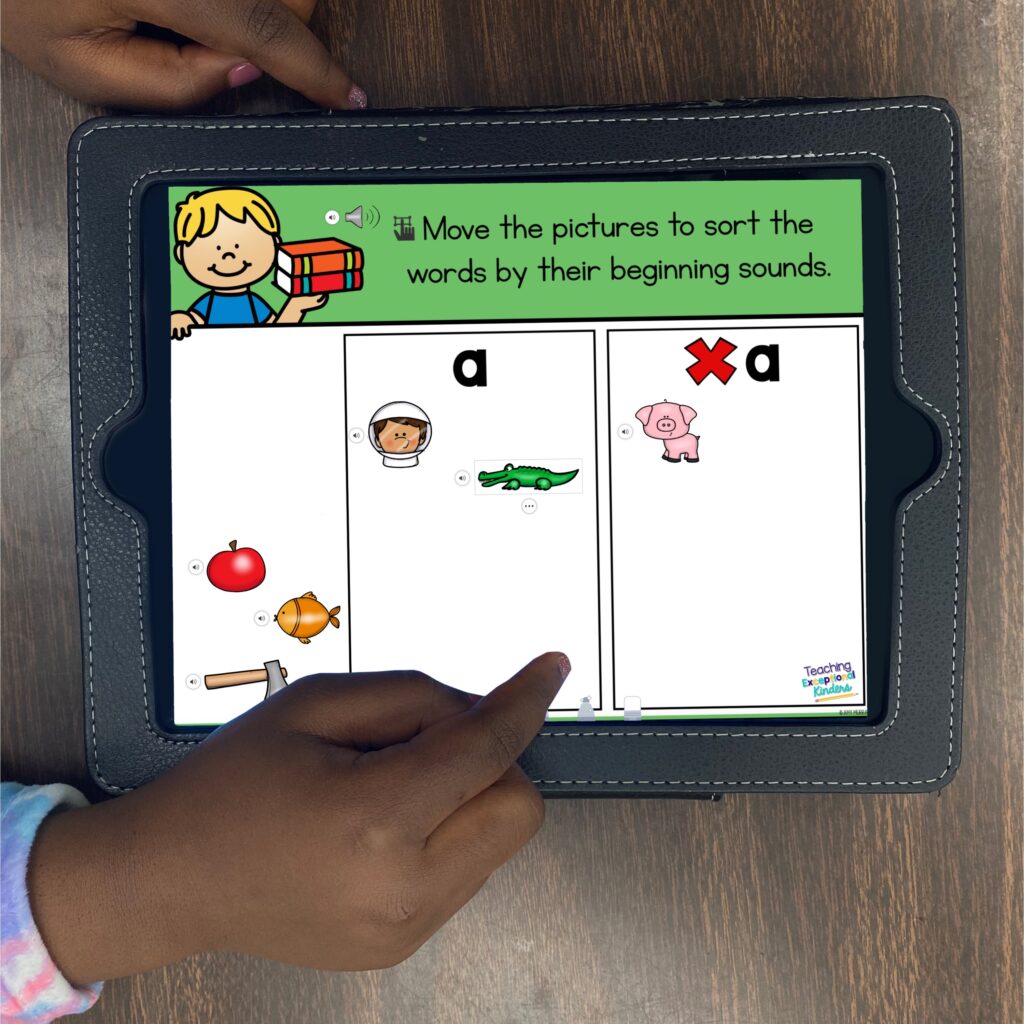How to Introduce Letters in Kindergarten
Teaching letters and sounds to kindergarten students is the foundation of language arts. There is a lot of conflicting research out there about how to introduce letters in kindergarten. This blog post explains how to teach letters to kindergarten students.

It's important to take the first 30 days of school to teach rules, routines, and set your expectations for the school year. It may seem boring and redundant, but kids thrive on structure and routine. These ideas for teaching letters in kindergarten are a great way to set these routines and set yourself up for success!
How does teaching letters and sounds fit into your first 30 days routines?
Take the time to introduce one letter per day for 26 days. I like to spend the first 3 days of school practicing expectations, reading books, and doing name activities, etc. Then on the 4th day, begin to introduce letters. Introduce 1 letter per day for 26 days. Then on day 30, have a letter party to celebrate making it through the entire alphabet.
What order should you introduce letters in kindergarten?
Remember that the purpose for introducing letters in 30 days is for exposure and introduction, not mastery. You can choose to do them in alphabetical order, the order that your phonics curriculum (like Fundations or OG) dictates, or by the way you make the letter (handwriting strokes). I found it was simplest and most predictable for students to introduce letters in alphabetical order.
Recent research has shown promise in introducing letters with similar handwriting strokes together. For example grouping T, L, with I and C with d, e, g, etc. But with the idea that the goal is exposure, not mastery, you have more flexibility.
With this in mind, you can choose a few alphabet routines to do with each letter you introduce. Keeping routines consistent will help your classroom management and help students to be more independent. It's a win-win.
What kind of alphabet routines should I have?
Anchor Charts
First, you'll need an engaging way to introduce the letter. You can use alphabet anchor charts as an organized way to show how to make the letter and give students a chance to practice writing the letter.
You'll want to be sure to introduce the sound that the letter spells (or represents). Be careful not to say the letter “says” a sound. The science of reading tells us that students learn sounds first, so when we introduce letters we are matching the print (letter) to sounds they already know.
If you have trouble keeping your students engaged during the whole group anchor chart, you could opt to have students complete a corresponding worksheet in their own letter page in a workbook. You can check out the anchor charts and corresponding worksheets we used here in my TPT store.
Letter Sound Poems
Letter Crafts
Incorporating a craft is a fun way to get extra fine motor and follow directions practice.
These alphabet hats are a simple craft that students love. And they get to wear them around so other people will ask them about the letter they learned. This gives them extra alphabet practice and an opportunity to share what they learned.
Independent Work
Set up a routine for independent table work. You could use a handwriting practice page, letter books, or any paper-pencil task that you can consistently do for each letter.
We like using these mini letter books. It includes different tasks like finding the letter, rainbow writing, handwriting practice, finding pictures that begin with the sound, etc. Each book is the same setup for every letter so after a few books, students know what to do with independence.
Alphabet Centers
For centers for the first 30 days or so, we had fine motor activities, Alphabet Seesaw activities for our iPads, and handwriting books as well as our listening center and name practice center. Explaining how to set up centers at the beginning of the year is a whole different blog post. However active modeling, keeping things hands-on, fun, and consistent are the keys to success. You can sign up for our email list below and grab your FREE alphabet center!
No time for centers at the beginning of the year? You can use fine motor tubs and other activities as morning work options or early finisher bins to keep kids busy and engaged with academic tasks.
More information about how to introduce the alphabet in Kindergarten
I hope these tips for teaching letters and sounds have helped you plan for your kindergarten classroom. Would you like an inside look and more information about how I introduced the alphabet in kindergarten? In this video, I walk you through our kindergarten alphabet routines.
Ready to set up your alphabet routines?
Ready to set up your alphabet routines, but you're not sure where to find all the materials you need? This bundle includes 11 different low-prep alphabet activities that will make teaching letters and sounds fun and engaging in kindergarten! And best of all- save yourself precious time! Check out my Alphabet Practice Bundle on my TPT store or here in my Teaching Exceptional Kinders Shop.
Are you short on time? Be sure to save this pin to your favorite kindergarten literacy board on Pinterest! That way you’ll be able to quickly find this alphabet bundle when you’re ready to download and print!

Grab a FREE Kindergarten Alphabet Center
Amy
SITE DESIGN BY LAINE SUTHERLAND DESIGNS










2 Comments
Thanks
No problem 🙂